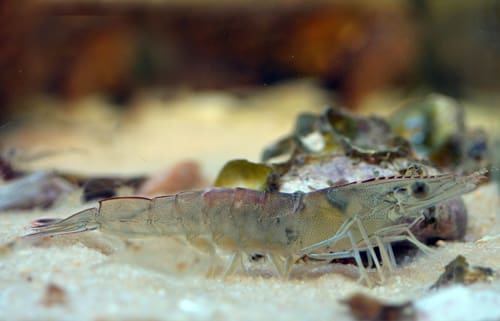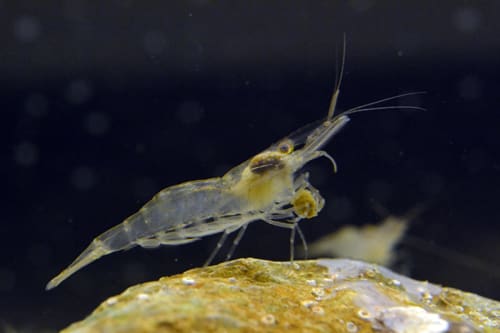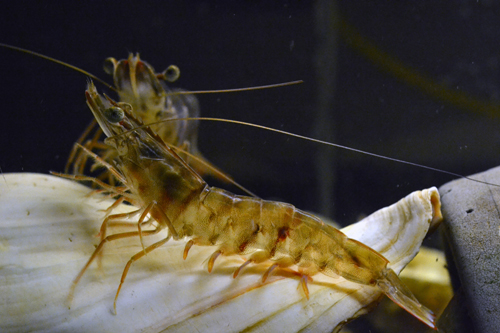Shrimp
Category:
AquaticsAbout
Shrimp
Shrimp is the most popular type of seafood in the U.S., comprising over 25% of total seafood consumption with over 4 pounds of shrimp a year eaten by the average consumer. The vast majority (> 90%) of the shrimp consumed by Americans originates from farms outside the United States, resulting in less than 10% from domestic wild harvests.
Most people are familiar with the types of shrimp on a menu: fried shrimp, grilled shrimp, steamed and spiced shrimp, etc. However, few people are familiar with the actual animal. The common edible “shrimp” is a catch-all term for several different species. On the East Coast, native edible shrimp species are closely related members of the Penaeus Family: pink, brown, or white shrimp named for their shell color. The habitats of these three species overlap, and with very similar ecologies they can be difficult to distinguish.
Shrimp are from an order of crustaceans called decapods (or literally “ten feet”), which also includes crabs, lobsters, and crayfish. Most decapods are opportunistic benthic omnivores, meaning they use their nimble legs and claws to crawl along the bottom and devour virtually anything edible. But shrimp, crayfish, and lobsters also possess extremely powerful, muscular tails which they can contract to propel themselves swiftly backwards when threatened. Aside from humans, shrimp are the favorite prey of many animals including sea trout, drum, flounder… actually just about anything. Therefore, they need to move very quickly and grow up very fast. Young penaeid shrimp feed continuously and grow rapidly – up to 2 ½” a month – in shallow, vegetated grass beds. Adults migrate seaward in the fall and winter, and may reach 8 inches in length, producing tens of thousands of eggs each!
The Bay populations of pink, white, or brown shrimp are not abundant enough to sustain a commercial fishery as they are most common in large numbers from North Carolina southward, but there are several species of non-edible shrimps in the Bay. Grass shrimp Palaemonetes sp. are extremely small (> 2”), but are by far the most abundant shrimp; present in massive numbers throughout the shallow water of the Bay, far up into rivers, even to freshwater. Other local shrimp species include: sand shrimp, rock shrimp, mud shrimp, snapping shrimp, mantis shrimp, et al.
We have created this exhibit to display the varieties of shrimp found in the Bay, as well as some of their invertebrate cousins, giving members and visitors the chance to see these interesting animals in a natural setting – lemon and butter not included.








